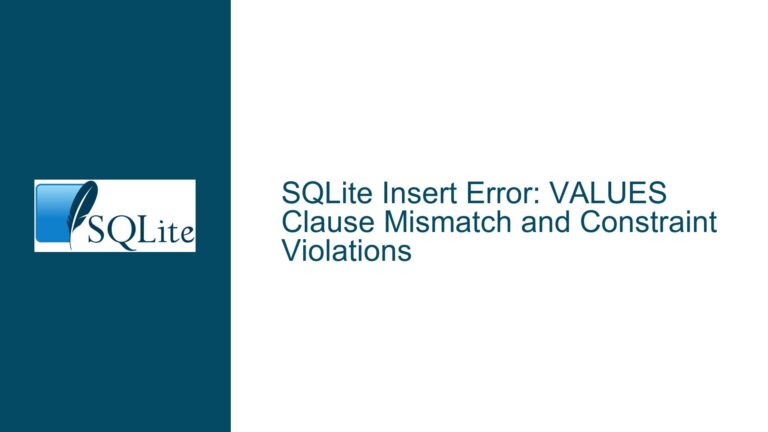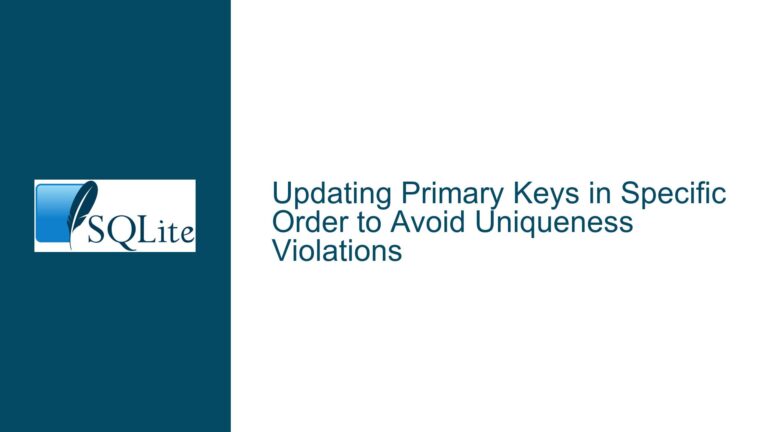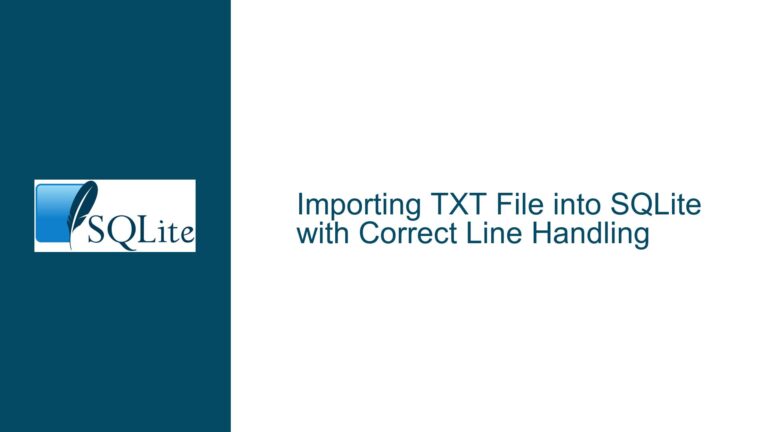Trigger WHEN Clause Ignored in SQLite FTS5 Index Population
Understanding the Trigger WHEN Clause Behavior in SQLite FTS5 Indexing
The core issue revolves around the apparent disregard of the WHEN clause in a trigger designed to populate an FTS5 (Full-Text Search) index in SQLite. The trigger is intended to execute only when a specific condition is met, such as when a newly inserted row’s column value equals a certain string. However, the trigger seems to execute regardless of the WHEN clause’s condition, leading to unexpected entries in the FTS5 index. This behavior raises questions about the interaction between triggers, the WHEN clause, and FTS5 virtual tables in SQLite.
Exploring the Interaction Between Triggers and FTS5 Virtual Tables
To understand the issue, it is essential to delve into the mechanics of SQLite triggers and FTS5 virtual tables. A trigger in SQLite is a database object that automatically executes a specified set of SQL statements when certain events occur, such as INSERT, UPDATE, or DELETE operations on a table. The WHEN clause in a trigger allows for conditional execution, ensuring that the trigger’s actions are only performed if the specified condition evaluates to true.
FTS5, on the other hand, is a virtual table module in SQLite that provides full-text search capabilities. It allows for the creation of virtual tables that index the content of other tables, enabling efficient text search operations. When using FTS5 with external content tables, the FTS5 virtual table does not store the actual data but instead references the content of another table. This setup requires careful management of the index to ensure that it accurately reflects the content of the referenced table.
The problem arises when attempting to use a trigger to populate the FTS5 index conditionally. The expectation is that the trigger will only insert data into the FTS5 index if the WHEN clause’s condition is satisfied. However, the observed behavior suggests that the WHEN clause is being ignored, leading to the insertion of data into the FTS5 index even when the condition is not met.
Diagnosing the Misinterpretation of FTS5 Index Contents
One of the key insights in resolving this issue is understanding the nature of the FTS5 virtual table and how it represents indexed data. The FTS5 virtual table does not store the actual data but instead maintains an index that allows for efficient text search operations. When querying the FTS5 virtual table directly, the results may not accurately reflect the underlying data, especially when dealing with conditional inserts.
In the provided scenario, the user initially misinterpreted the results of querying the FTS5 virtual table directly. The expectation was that the FTS5 index would only contain entries for which the WHEN clause’s condition was satisfied. However, the FTS5 virtual table’s representation of the data may not align with this expectation, leading to confusion about the trigger’s behavior.
To accurately diagnose the issue, it is necessary to examine the internal tables associated with the FTS5 virtual table, such as fts_idx_data and fts_idx_idx. These tables store the actual indexed data and can provide a more accurate representation of the FTS5 index’s contents. By querying these internal tables, it becomes evident that the WHEN clause is indeed being respected, and only the appropriate data is being inserted into the FTS5 index.
Resolving the Trigger WHEN Clause Issue in FTS5 Indexing
To ensure that the trigger behaves as expected and only populates the FTS5 index when the WHEN clause’s condition is met, it is crucial to follow these troubleshooting steps:
Verify the Trigger Definition: Ensure that the trigger is correctly defined with the appropriate
WHENclause. TheWHENclause should specify the condition that must be met for the trigger to execute. For example, if the trigger should only execute when thebcolumn of the newly inserted row equals ‘foo’, theWHENclause should beWHEN new.b = 'foo'.Examine the FTS5 Virtual Table’s Internal Tables: Instead of querying the FTS5 virtual table directly, examine the internal tables associated with the FTS5 index. These tables, such as
fts_idx_dataandfts_idx_idx, store the actual indexed data and can provide a more accurate representation of the FTS5 index’s contents. By querying these tables, you can verify whether theWHENclause is being respected and only the appropriate data is being inserted into the FTS5 index.Test the Trigger with Different Conditions: To further validate the trigger’s behavior, test it with different conditions in the
WHENclause. For example, create a trigger with a condition that should never evaluate to true, such asWHEN 0 > 1. If the trigger does not execute when this condition is used, it confirms that theWHENclause is being respected.Review the FTS5 Documentation: Consult the SQLite documentation on FTS5 and triggers to ensure that the trigger is correctly configured and that there are no known issues or limitations with using triggers to populate FTS5 indexes. The documentation may provide additional insights or best practices for managing FTS5 indexes with triggers.
Consider Alternative Approaches: If the issue persists, consider alternative approaches to managing the FTS5 index. For example, instead of using a trigger, you could manually manage the FTS5 index by explicitly inserting data into it only when the specified condition is met. This approach provides more control over the index’s contents but may require additional logic to ensure consistency.
By following these troubleshooting steps, you can ensure that the trigger behaves as expected and only populates the FTS5 index when the WHEN clause’s condition is met. This approach not only resolves the immediate issue but also provides a deeper understanding of the interaction between triggers and FTS5 virtual tables in SQLite.
Conclusion
The issue of the WHEN clause being ignored in a trigger designed to populate an FTS5 index in SQLite can be resolved by carefully examining the trigger’s definition, the FTS5 virtual table’s internal tables, and the documentation. By understanding the mechanics of triggers and FTS5 virtual tables, and by following the troubleshooting steps outlined above, you can ensure that the trigger behaves as expected and only populates the FTS5 index when the specified condition is met. This approach not only resolves the immediate issue but also provides a foundation for effectively managing FTS5 indexes in SQLite.






